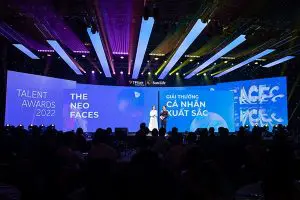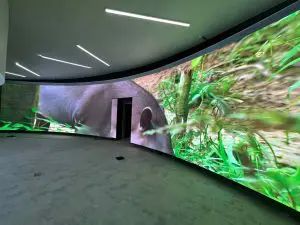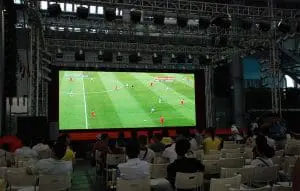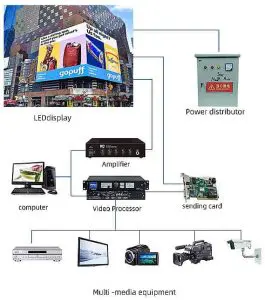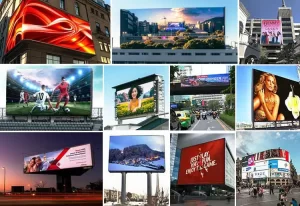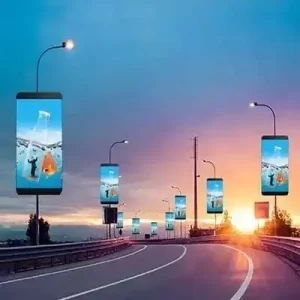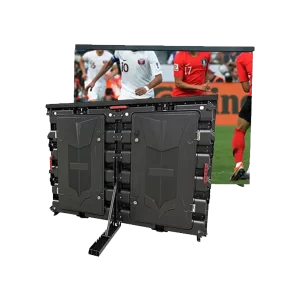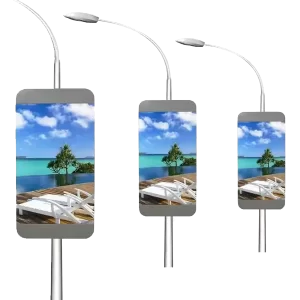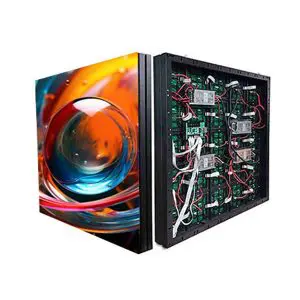Outdoor Digital Screen: Ultimate Guide to Features, Benefits, Applications, Costs, and Buying Tips
An outdoor digital screen is a high-performance display designed to deliver vibrant visuals and dynamic content in outdoor environments. These screens are built to withstand harsh weather conditions while ensuring excellent visibility, even under direct sunlight. Whether for advertising, events, public information, or entertainment, outdoor digital LED display screens serve as a powerful tool for engaging large audiences in open spaces. With global outdoor advertising spending projected to reach $40 billion by 2025 (source: Statista), outdoor digital screens have become essential for modern marketing, communication, and urban development.
This comprehensive guide explores the features, benefits, applications, types, technical specifications, costs, buying tips, installation advice, future trends, and frequently asked questions about outdoor digital screens. Drawing from industry insights and expert analysis (including data from MarketsandMarkets and OAAA), we’ll help you understand why these displays are a game-changer. If you’re an advertiser, event organizer, or city planner searching for the best outdoor digital screen, this guide will equip you with actionable knowledge to make informed decisions and maximize ROI.
What Is an Outdoor Digital Screen?
An outdoor digital screen is a durable electronic display that uses LED technology to showcase videos, images, text, and interactive content in external settings. Unlike indoor screens, outdoor digital screens are engineered with reinforced materials to handle extreme weather, UV exposure, dust, and impacts, while maintaining high brightness for daylight visibility. They typically consist of modular LED panels that can be assembled into various sizes, from compact roadside signs to massive stadium video walls.
The core technology revolves around LEDs (light-emitting diodes), which provide energy-efficient, long-lasting illumination. Key differentiators include weatherproof ratings (e.g., IP65+), anti-glare coatings, and robust cooling systems to prevent overheating. According to a 2023 report by MarketsandMarkets, the outdoor LED screens market is growing at a CAGR of 8.5%, driven by smart city initiatives and digital out-of-home (DOOH) advertising.
Compared to traditional billboards, outdoor digital screens offer real-time updates, higher engagement (up to 40% more than static ads, per OAAA studies), and measurable analytics via integrated software. They are ideal for high-traffic areas where visibility and durability are paramount.
Key Features of Outdoor Digital Screens
Outdoor digital screens are equipped with advanced features to thrive in demanding conditions. Here’s a detailed look:
- High Brightness for Sunlight Visibility: Levels from 3,000 to 10,000 nits ensure clear, vibrant displays even in direct sunlight, outperforming indoor screens by 5-10 times.
- Weatherproof Design: IP65+ or higher ratings protect against rain, dust, wind, snow, and extreme temperatures (-30°C to 60°C), with sealed cabinets and anti-corrosion coatings.
- Large Viewing Distances and Angles: Pixel pitches (P3–P10) optimized for 10-100 meter viewing; wide angles (160–180°) ensure visibility from multiple directions.
- Modular and Scalable Design: Interchangeable panels allow custom sizes, shapes, and easy repairs without downtime.
- Durable Construction: 50,000–100,000 hour lifespan; impact-resistant materials withstand vandalism and environmental stress.
- Energy Efficiency: Low power consumption (300–600 W/m²), reducing costs by 40% compared to traditional lighting (source: U.S. Department of Energy).
- Real-Time Content Management: Remote updates via Wi-Fi, 4G/5G, or cloud platforms, enabling instant changes for ads or emergencies.
- Advanced Cooling and Monitoring: Built-in fans and sensors prevent overheating; some models include AI for predictive maintenance.
These features position outdoor digital screens as reliable, high-ROI investments for 24/7 operation.
Benefits of Outdoor Digital Screens

Investing in an outdoor digital screen yields substantial advantages, making it a superior choice over static signage or projectors:
- Unmatched Visibility in Any Condition: High brightness and contrast ensure content stands out, increasing audience engagement by 40% in bright environments (per Nielsen studies).
- Dynamic Content Capabilities: Display videos, animations, and interactive elements, boosting ad recall by 25% compared to static billboards (source: Journal of Advertising Research).
- Weather Resistance and Reliability: Continuous operation in rain or heat minimizes downtime, with IP-rated designs lasting 10+ years.
- Cost-Effective Advertising: Eliminate printing/replacement costs; digital formats allow targeted campaigns, achieving ROI in 6-12 months.
- Real-Time Flexibility: Update content instantly for time-sensitive info, like event schedules or emergency alerts.
- Scalability and Customization: Modular builds fit any space, from small kiosks to 100m² walls.
- Eco-Friendly Operation: Lower energy use reduces carbon footprint by 30-50% versus halogen lights.
- Data-Driven Insights: Integrated analytics track views, impressions, and interactions for optimized campaigns.
Businesses like Coca-Cola have seen 35% higher brand awareness using outdoor digital LED display screens in urban campaigns, highlighting their revenue potential.
Applications of Outdoor Digital Screens
Outdoor digital screens are versatile, transforming public and commercial spaces:
- Advertising and Marketing
- Digital Billboards: High-traffic spots like highways for targeted ads, generating up to $10,000/month in revenue per screen.
- Retail Signage: Promote sales at store entrances, increasing foot traffic by 20%.
- Public Spaces and Information
- City Squares and Parks: Display announcements, weather, or events.
- Transportation Hubs: Real-time schedules at airports, stations, or bus stops.
- Events and Entertainment
- Concerts and Festivals: Stage backdrops for live streams and visuals.
- Sports Stadiums: Scoreboards and replays on large outdoor LED screens, enhancing fan experiences.
- Government and Municipal Use
- Emergency Messaging: Alerts for disasters or traffic.
- Community Outreach: Local news, voting info, or health campaigns.
- Education and Hospitality
- Campus Displays: Announcements on university grounds.
- Hotels and Attractions: Welcome messages or interactive guides.
- Corporate and Retail
- Drive-Thru Menus: Dynamic pricing at fast-food chains.
- Theme Parks: Immersive storytelling.
Case Study: New York’s Times Square features over 200 outdoor digital screens, attracting 50 million visitors annually and generating $1 billion+ in ad revenue (source: Times Square Alliance).
Types of Outdoor Digital Screens
Choose from these types based on your needs:
| Type | Best For | Key Features |
|---|---|---|
| Fixed LED Display | Permanent billboards | High-brightness, weatherproof, durable. |
| Portable LED Display | Temporary events | Lightweight, quick setup/teardown. |
| Video Walls | Large-scale venues | Modular panels for seamless giant screens. |
| Transparent LED Display | Glass facades | 50-90% transparency, light-passing. |
| Curved LED Display | Immersive designs | Flexible curvature for wraps or arcs. |
| Rental LED Display | Short-term use | Easy transport, cost-effective for one-off events. |
Technical Specifications of Outdoor Digital Screens
| Specification | Details |
|---|---|
| Pixel Pitch | P3–P10 for optimal distance viewing. |
| Brightness | 3,000–10,000 nits. |
| Refresh Rate | ≥3,840 Hz for smooth playback. |
| Viewing Angle | 160–180°. |
| Weatherproof Rating | IP65+ (dust/water resistant). |
| Power Consumption | 300–600 W/m². |
| Lifespan | 50,000–100,000 hours. |
| Operating Temperature | -30°C to 60°C. |
Factors to Consider When Choosing an Outdoor Digital Screen

- Pixel Pitch and Resolution: P3–P5 for close (5-10m); P6–P10 for far (20m+).
- Brightness and Visibility: 5,000+ nits for sunny areas; anti-glare for reflections.
- Weatherproofing and Durability: IP65+; check wind resistance (up to 150 km/h).
- Screen Size and Aspect Ratio: Match to location (e.g., 16:9 for videos).
- Content Management System: Cloud-based for remote updates; integration with CMS like Scala.
- Energy Efficiency and Power Supply: Low-wattage models with solar options for sustainability.
- Budget and Maintenance: Factor in installation, warranties (2-5 years), and annual upkeep (5-10% of cost).
- Compliance and Safety: Ensure certifications like CE, FCC, and RoHS.
Expert Tip: For the best outdoor digital screen for advertising, prioritize models with AI analytics to measure ROI.
Installation Guide for Outdoor Digital Screens
- Site Assessment: Evaluate location for sunlight, wind, and power access.
- Foundation and Mounting: Use steel structures for stability; hire certified installers.
- Panel Assembly: Connect modular units; calibrate for uniformity.
- Wiring and Connectivity: Install weatherproof cables; test remote access.
- Testing and Launch: Run diagnostics for brightness and content; monitor for 24-48 hours.
- Maintenance Plan: Schedule quarterly checks for cleaning and software updates.
Costs for professional installation: $5,000–$20,000, depending on size.
Costs of Outdoor Digital Screens
Outdoor digital screen prices vary by specs and size (2023 estimates, per m²):
| Screen Type | Pixel Pitch | Cost per m² (USD) | Example Total (10 m²) |
|---|---|---|---|
| Fixed LED Display | P3–P10 | $1,000–$2,000 | $10,000–$20,000 |
| Portable LED Display | P4–P10 | $2,000–$3,000 | $20,000–$30,000 |
| Video Wall | P2.5–P6 | $1,000–$2,000 | $10,000–$20,000 |
| Transparent LED Display | P3–P7 | $1,500–$3,000 | $15,000–$30,000 |
| Curved LED Display | P2.5–P10 | $1,000–$3,000 | $10,000–$30,000 |
| Rental LED Display | P3–P6 | $100–$300 (per day) | $1,000–$3,000 (daily) |
- Additional Costs: Installation (10-20% of screen price), content creation ($1,000–$5,000), maintenance (5-10% annually).
- ROI Factors: High-traffic screens can recover costs in 6-12 months via ads (e.g., $5,000/month revenue potential).
Budget Tip: For affordable options, consider used or refurbished outdoor LED screens from certified vendors, saving 20-40%.
Future Trends in Outdoor Digital Screens
- 5G and IoT Integration: Real-time data syncing for interactive displays.
- AI-Powered Content: Automated personalization based on audience demographics.
- Sustainable Materials: Eco-friendly LEDs with solar power, reducing energy by 50%.
- Higher Resolutions: Micro-LED for 8K outdoor screens.
- Augmented Reality (AR): Overlay digital content on real-world views.
- Transparent and Flexible Hybrids: Combining see-through tech with curvature for urban art.
FAQ: Common Questions About Outdoor Digital Screens
- What is an outdoor digital screen? A weatherproof LED display for outdoor visuals, ideal for ads and events.
- What are the benefits of outdoor LED screens? High visibility, durability, and cost savings over static signage.
- How much does an outdoor digital screen cost? $1,000–$3,000 per m², plus installation.
- What is the best pixel pitch for outdoor digital screens? P6–P10 for long-distance viewing.
- Are outdoor digital LED display screens energy-efficient? Yes, using 40% less power than traditional options.
- Can outdoor digital screens withstand rain? Absolutely, with IP65+ ratings for full weather resistance.
- What is the lifespan of an outdoor digital screen? 50,000–100,000 hours with proper maintenance.
- How do I choose the best outdoor digital screen for advertising? Prioritize brightness (5,000+ nits) and modular design for easy updates.










